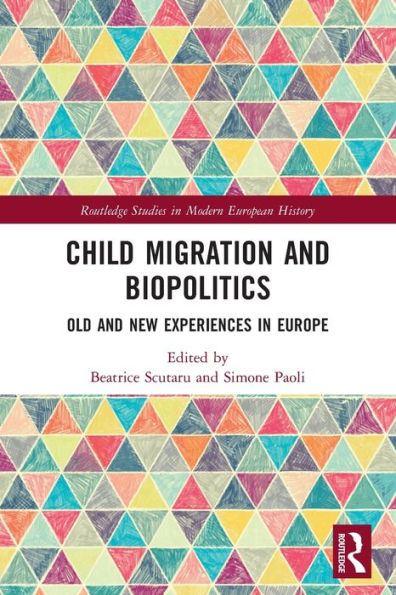Home
Child Migration and Biopolitics: Old New Experiences Europe
Barnes and Noble
Loading Inventory...
Child Migration and Biopolitics: Old New Experiences Europe
Current price: $190.00

Barnes and Noble
Child Migration and Biopolitics: Old New Experiences Europe
Current price: $190.00
Loading Inventory...
Size: Hardcover
*Product information may vary - to confirm product availability, pricing, shipping and return information please contact Barnes and Noble
This book provides a fresh interdisciplinary analysis into the lives of migrant children and youth over the course of the twentieth century and up to the present day. Adopting
biopolitics
as a theoretical framework, the authors examine the complex interplay of structures, contexts and relations of power which influence the evolution of child migration across national borders. The volume also investigates children’s experiences, views, priorities and expectations and their roles as active agents in their own migration.
Using a great variety of methodologies (archival research, ethnographic observation, interviews) and sources (drawings, documents produced by governments and experts, films and press), the authors provide richly documented case studies which cover a wide geographical area within Europe, both West (Belgium, France, Germany) and East (Romania, Russia, Ukraine), South (Italy, Portugal, Turkey) and North (Sweden), enabling a deep understanding of the diversity of migrant childhoods in the European context.
biopolitics
as a theoretical framework, the authors examine the complex interplay of structures, contexts and relations of power which influence the evolution of child migration across national borders. The volume also investigates children’s experiences, views, priorities and expectations and their roles as active agents in their own migration.
Using a great variety of methodologies (archival research, ethnographic observation, interviews) and sources (drawings, documents produced by governments and experts, films and press), the authors provide richly documented case studies which cover a wide geographical area within Europe, both West (Belgium, France, Germany) and East (Romania, Russia, Ukraine), South (Italy, Portugal, Turkey) and North (Sweden), enabling a deep understanding of the diversity of migrant childhoods in the European context.
This book provides a fresh interdisciplinary analysis into the lives of migrant children and youth over the course of the twentieth century and up to the present day. Adopting
biopolitics
as a theoretical framework, the authors examine the complex interplay of structures, contexts and relations of power which influence the evolution of child migration across national borders. The volume also investigates children’s experiences, views, priorities and expectations and their roles as active agents in their own migration.
Using a great variety of methodologies (archival research, ethnographic observation, interviews) and sources (drawings, documents produced by governments and experts, films and press), the authors provide richly documented case studies which cover a wide geographical area within Europe, both West (Belgium, France, Germany) and East (Romania, Russia, Ukraine), South (Italy, Portugal, Turkey) and North (Sweden), enabling a deep understanding of the diversity of migrant childhoods in the European context.
biopolitics
as a theoretical framework, the authors examine the complex interplay of structures, contexts and relations of power which influence the evolution of child migration across national borders. The volume also investigates children’s experiences, views, priorities and expectations and their roles as active agents in their own migration.
Using a great variety of methodologies (archival research, ethnographic observation, interviews) and sources (drawings, documents produced by governments and experts, films and press), the authors provide richly documented case studies which cover a wide geographical area within Europe, both West (Belgium, France, Germany) and East (Romania, Russia, Ukraine), South (Italy, Portugal, Turkey) and North (Sweden), enabling a deep understanding of the diversity of migrant childhoods in the European context.

















